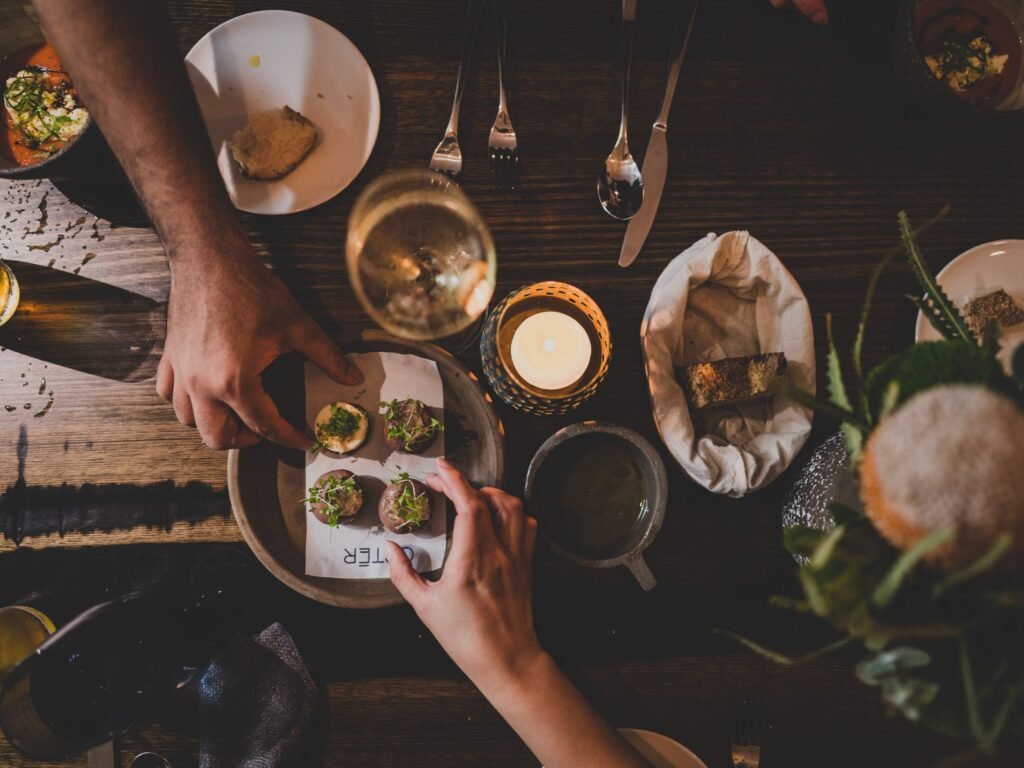There’s nothing more comforting than the smell of a 3-hour roast warming first the house as it cooks, then the family table, and then your belly. Food holds one of the most unique placeholders in society; we need it to survive, to thrive; we share it with others in difficult times and moments of celebration; we personally identify with flavors from childhood or from our culture. I’m a firm believer that there isn’t a life scenario that the right meal can’t help. Feeling ill? Have a bowl of chicken soup. Dealing with a breakup? Grab some ice cream and skip the bowl. Want to impress the in-laws? Hello rack of lamb with a cherry glaze! Humanity incorporates food into countless aspects of our lives, but once the meal is over, we have a habit of forgetting about the remains. What happens to that roast once the family is tired of eating the same meal? What about the leftover Christmas cookies the neighbor dropped off that went stale? What happens to the buffet remains after they’ve been sitting on the line for hours on end?
When one steps back from their personal role to assess the food system in its entirety, the unsustainable nature of the beast rears its ugly head. In the U.S., nearly a third of food produced for human consumption is either lost or wasted. That means nearly a third of all the inputs required to produce, process, ship, prep, and store food are also wasted. If food waste were a country, it would be the third largest emitter of greenhouse gases after the U.S. and China. When organic material decomposes in an aerobic environment, such as a compost pile, carbon dioxide is created. However, in a landfill, the lack of oxygen present causes organics to off gas methane- a greenhouse gas 100 times more potent at storing atmospheric heat than Carbon Dioxide. Out of the 63 million tons of food waste generated in 2018, only 4% was managed via composting. When faced with the facts, it’s commonly argued that the single most impactful step society can take to combat climate change is remove organics from the landfill. But how do we do that in the age of convenience? Enter compostables, stage left.
Compostable foodservice ware is a small but key component to redirecting commercial organics from landfill to compost operations. In the age of convenience, simplifying the responsibility of the consumer is crucial. When lunch travels in a Styrofoam clamshell, there are some brave souls willing to scrape their leftovers out of the container and into the green bin, but it is unrealistic to expect this level of due diligence from the larger population. To capture those organics properly, it makes much more sense to make the vessel they’re stored in compostable as well.
Personally, I’m a full believer that all food packaging will eventually need to be compostable for society to meet this goal. But the fact is, we’re not there yet. Today, CMA regularly sees items designed as compostable passing the required ASTM tests but failing to compost at the facility. This is a problem that must be solved in order to move the dial towards a true circular economy. Any items present in commercial composting that don’t disintegrate are designated as ‘contamination,’ sifted from the final product, and sent to the landfill at the expense of the composter regardless of whether they were designed to compost or not. If this problem persists, compost manufacturers will choose to stop accepting post-consumer food waste altogether. This is already happening in places like Oregon and Vermont.
Through collaboration across stakeholders, we here at CMA are working to solve this problem. By working with product developers, ASTM lab experts, compost manufacturers, and industry leaders, we hope to foster transparent partnership in the goal of long-term, truly sustainable compost programs. It is my hope that this stakeholder collaboration will drive the development of new food-related compostables and contribute to shifting the organics from the landfill and into a high-quality, stable soil amendment.
If you are a packaging designer, this is your call to action. Let’s collaborate across the manufacturing chain! Let’s develop compostable materials that work both in their shelf stability and in the compost pile. Let’s move away from single-use plastic alternatives and design foodservice and food-related items to work for the highest energy return. Let’s redesign the narrative so that, in the future, when Uncle Fred cleans out the fridge after the holidays, he’s not inadvertently sending organics to the landfill.

